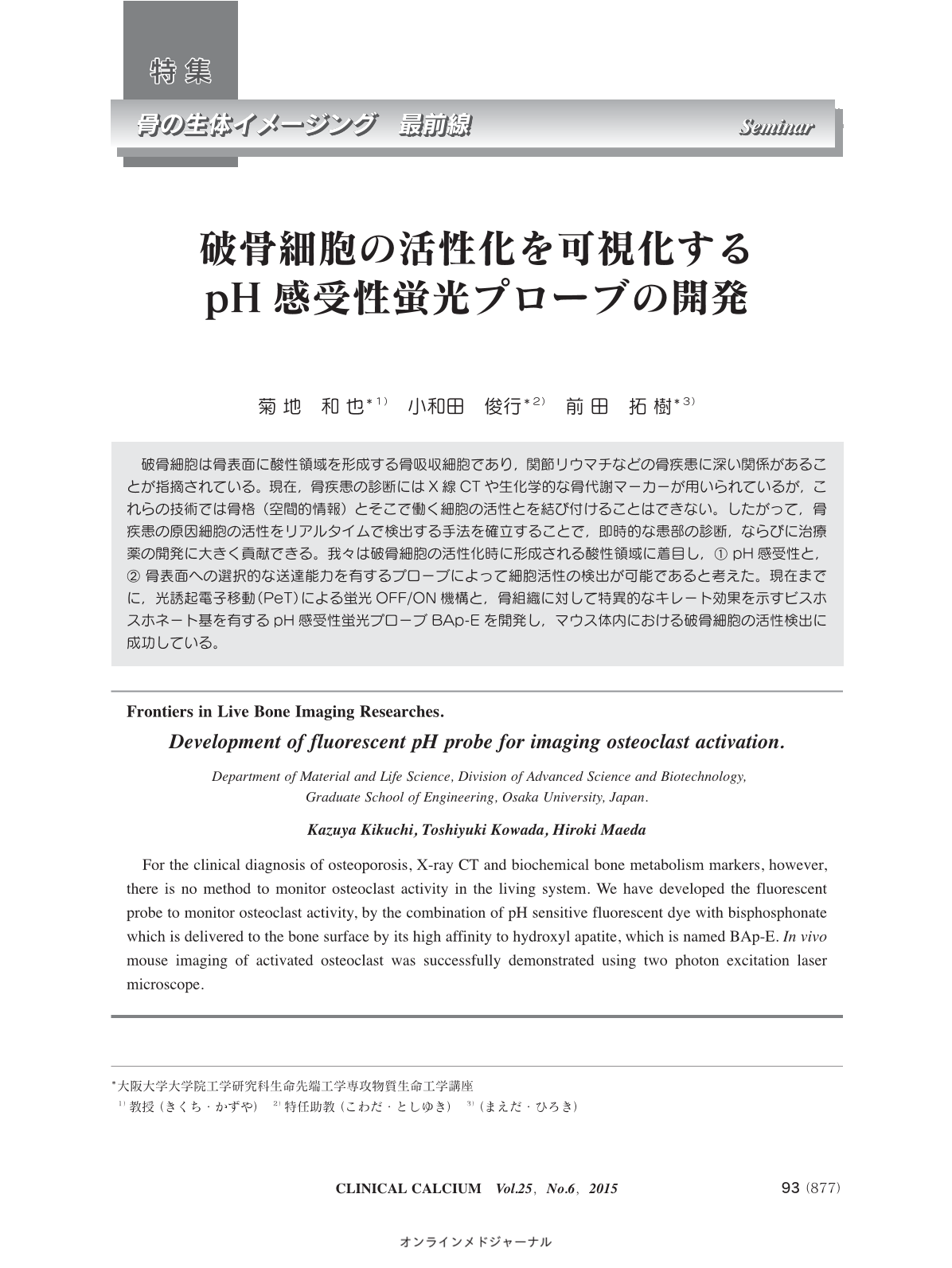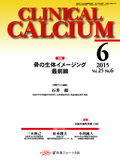Japanese
English
- 有料閲覧
- Abstract 文献概要
- 1ページ目 Look Inside
- 参考文献 Reference
破骨細胞は骨表面に酸性領域を形成する骨吸収細胞であり,関節リウマチなどの骨疾患に深い関係があることが指摘されている。現在,骨疾患の診断にはX線CTや生化学的な骨代謝マーカーが用いられているが,これらの技術では骨格(空間的情報)とそこで働く細胞の活性とを結び付けることはできない。したがって,骨疾患の原因細胞の活性をリアルタイムで検出する手法を確立することで,即時的な患部の診断,ならびに治療薬の開発に大きく貢献できる。我々は破骨細胞の活性化時に形成される酸性領域に着目し,〈1〉 pH感受性と,〈2〉 骨表面への選択的な送達能力を有するプローブによって細胞活性の検出が可能であると考えた。現在までに,光誘起電子移動(PeT)による蛍光OFF/ON機構と,骨組織に対して特異的なキレート効果を示すビスホスホネート基を有するpH感受性蛍光プローブ BAp-Eを開発し,マウス体内における破骨細胞の活性検出に成功している。
For the clinical diagnosis of osteoporosis, X-ray CT and biochemical bone metabolism markers, however, there is no method to monitor osteoclast activity in the living system. We have developed the fluorescent probe to monitor osteoclast activity, by the combination of pH sensitive fluorescent dye with bisphosphonate which is delivered to the bone surface by its high affinity to hydroxyl apatite, which is named BAp-E. In vivo mouse imaging of activated osteoclast was successfully demonstrated using two photon excitation laser microscope.



